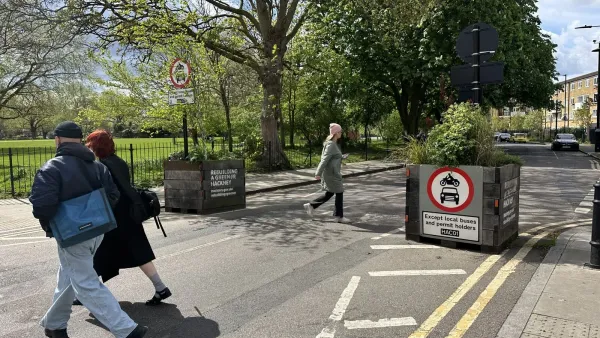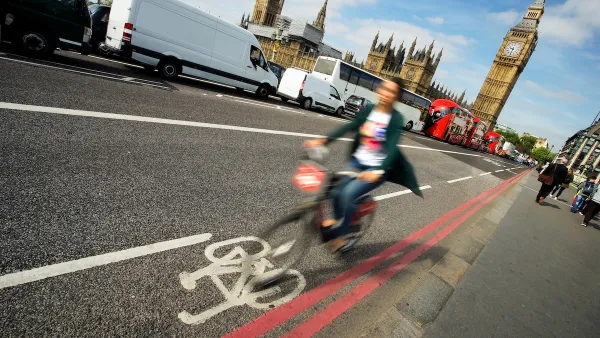According to Chris Peck, “Better cycling infrastructure, an enforced road traffic law and a reduction in the space available to motor traffic are all required to get cycling growing again in London.”
"The mayor of London's 'cycling Revolution', launched in 2010, was revolutionary in name only,” writes Chris Peck, policy coordinator of the UK's national cyclists' organization, the Cyclists' Touring Club (CTC). A bit of a mixed bag, London's citywide cycling campaign has seen its share of successes and failures. Accomplishments include the implementation of a bicycle borrowing system, the creation of cycling superhighways, and ushering in a 10-15% increase in cycling levels. But, all this development has been costly for London at about £10 per head, and several high-profile deaths and what many feel is poorly design cycling infrastructure and regulation have been accompanied by a recent decline in cycling levels.
Since 2007, “both nationally and in London, cycle casualties have been increasing faster than the rate of cycling, undermining the idea that if you get more people cycling, it will inevitably become safer,” writes Peck. In fact, he asserts that in London, unlike in cities such as Copenhagen and Amsterdam, the “safety in numbers” idea has failed to materialize. This is due to a variety of factors related to both infrastructure and policing, as well as road user behavior. "The problem with so much existing cycle infrastructure is that it does little to improve safety, but also undermines the status of cycling, relegating them to a narrow, unhelpful cycle lane the users of which must give way to all other road users," writes Peck.
FULL STORY: Why is there no safety in numbers for London's cyclists?

National Parks Layoffs Will Cause Communities to Lose Billions
Thousands of essential park workers were laid off this week, just before the busy spring break season.

Retro-silient?: America’s First “Eco-burb,” The Woodlands Turns 50
A master-planned community north of Houston offers lessons on green infrastructure and resilient design, but falls short of its founder’s lofty affordability and walkability goals.

Delivering for America Plan Will Downgrade Mail Service in at Least 49.5 Percent of Zip Codes
Republican and Democrat lawmakers criticize the plan for its disproportionate negative impact on rural communities.

Test News Post 1
This is a summary

Test News Headline 46
Test for the image on the front page.

Balancing Bombs and Butterflies: How the National Guard Protects a Rare Species
The National Guard at Fort Indiantown Gap uses GIS technology and land management strategies to balance military training with conservation efforts, ensuring the survival of the rare eastern regal fritillary butterfly.
Urban Design for Planners 1: Software Tools
This six-course series explores essential urban design concepts using open source software and equips planners with the tools they need to participate fully in the urban design process.
Planning for Universal Design
Learn the tools for implementing Universal Design in planning regulations.
EMC Planning Group, Inc.
Planetizen
Planetizen
Mpact (formerly Rail~Volution)
Great Falls Development Authority, Inc.
HUDs Office of Policy Development and Research
NYU Wagner Graduate School of Public Service





























